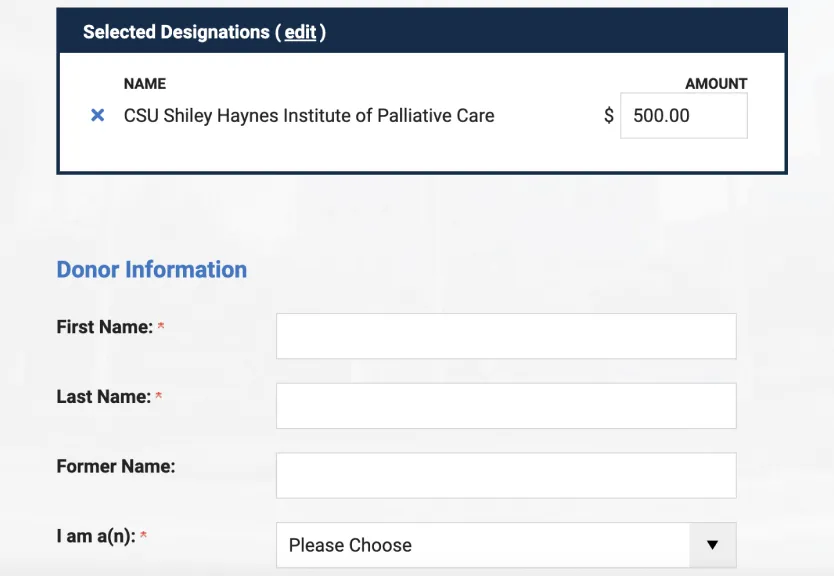Palliative Care Fully Deployed in Era of COVID-19
By Larry Beresford
Palliative care physician Martha Twaddle recently helped a primary care colleague conduct a telemedicine visit with two patients in their 80s, both of whom had multiple health problems. The visit was to talk about advance care planning, specifically what kind of treatment the pair would want should they become seriously ill with COVID-19.
Twaddle, Medical Director for Palliative Medicine & Supportive Care at Northwestern Medicine—Lake Forest Hospital in suburban Chicago, said she felt like the wingman for the primary care practitioner (PCP), who was leading the goals-of-care conversation.
The PCP explained that a COVID infection could easily lead to crisis decision-making, placement in the ICU, and insertion of a ventilator for breathing support, which often has bad outcomes, particularly for older patients with comorbidities.
He then asked, “if you got sick, what would you want?’” Twaddle said. “They decided that if they got COVID, they would not want to be hospitalized.”
Importance of Advance Care Planning
This is what palliative care often looks like in the pandemic era, said Twaddle, who has worked in hospice and palliative medicine for 30 years. Physicians connecting over video screens with patients who are miles away, and having important conversations about difficult topics.
“We in palliative care have been coaching and equipping our medical colleagues in how to have these conversations, and we’re there for them to debrief after such calls, knowing that our team can’t (always) be present,” she said. “We’ve been pushing out scripts for PCPs to use with their patients, to help them facilitate these discussions.”
Talking with patients and families before catastrophic illness strikes is key. Otherwise, the patient may be too sick to articulate what kind of treatments they want, leaving distraught family members to make those decisions, Twaddle said.
That happens too often, she added, especially in COVID-19, where patients can deteriorate quickly. “Increasingly, we’re being asked to help the ICU doctors” have those conversations, Twaddle said.
The Growing Role of Telemedicine

The hospital’s palliative care and hospice programs are fully deployed, Dr. Twaddle said. Chicago has been a hot spot for COVID-19, and folks are extraordinarily ill.
The hospital’s palliative care team – including three physicians, two advance practice nurses, a nurse coordinator, social workers and chaplains – is busy with inpatient care and making virtual home visits using telemedicine, to avoid unnecessary personal contact.
Twaddle oversees the team, but spends 80 percent of her time on clinical care, most of it non-COVID oncology, with the majority of her patient encounters taking place via telemedicine.
“We don’t want people coming into the clinic unless necessary, but I might do a face-to-face visit if they come for an infusion or for labs,” she explained. “It’s been extraordinarily effective to see them in their homes via telehealth, with their families, without having to wear a mask. I enjoy it and hope we can retain telehealth as part of our practice (after the crisis ends).”
Twaddle also helps to facilitate referrals to local hospices.
“Hospice is not new at dealing with symptoms (we’re seeing with COVID), such as severe shortness of breath,” Twaddle said. “There are outstanding hospices, and we have a short list of community partners that shine in their ability to provide excellent hospice care.”
Life Lessons and Practicing Self-Care
What has she learned from providing palliative care in the COVID era?
“This pandemic has brought home again the essentials of daily fortification – regular exercise, sleep, good food, time with friends and my family via Zoom or FaceTime, and daily meditation,” she said. “Whenever I can get out and walk in the woods or work in my garden, I seize that opportunity.”
Like other healthcare professionals on the front lines, Twaddle is aware of the risks of infection with COVID-19 and said she is doing everything she can to mitigate them and practice healthy coping strategies.
“There is an old saying: ‘put your own mask on first before helping others,’” Twaddle said. “The sense of vulnerability and the triggered anxiety of this time are very high. It can be tender and terrifying at times, so these practices of self-compassion are really essential.”




